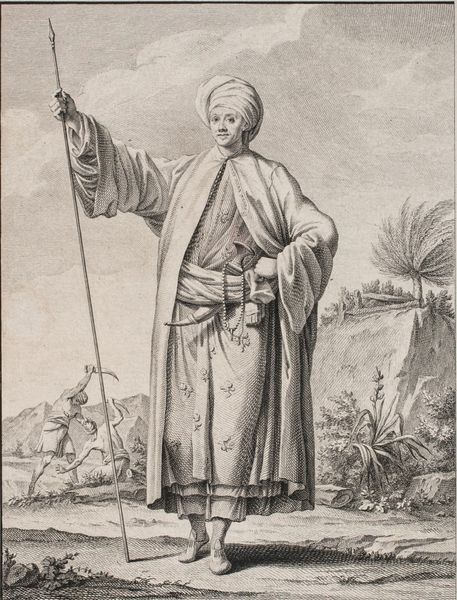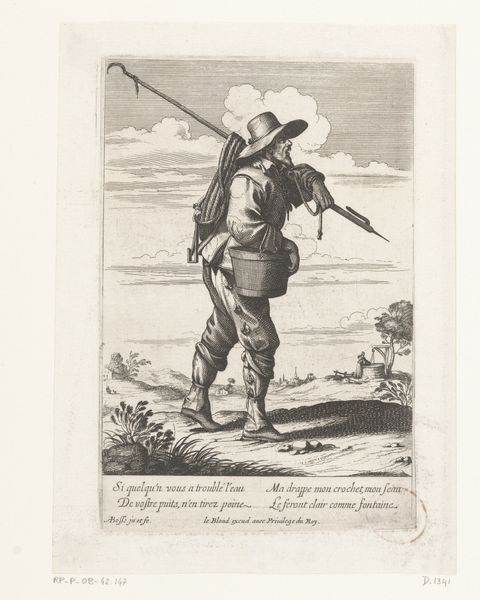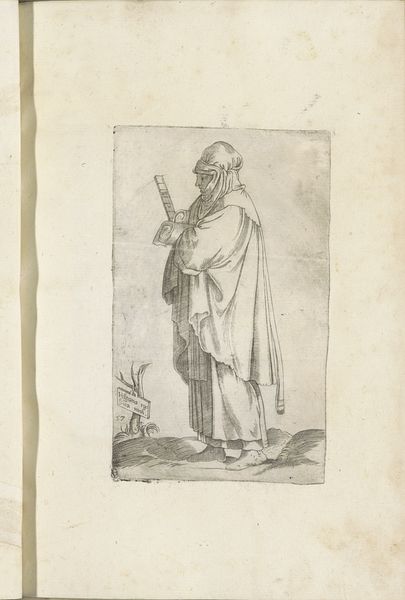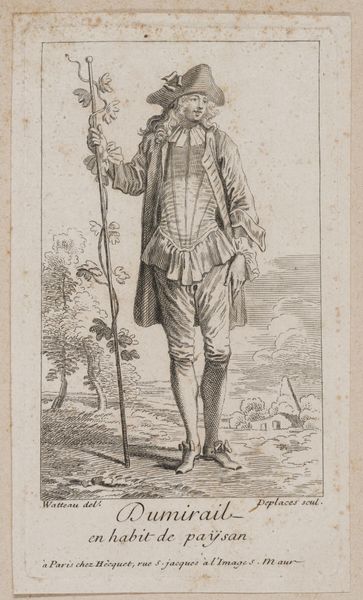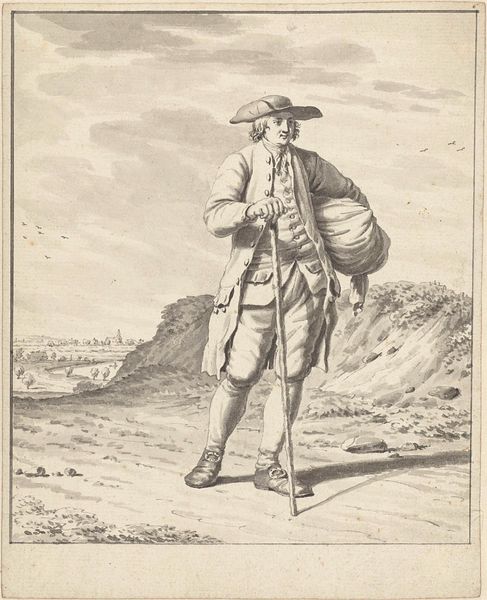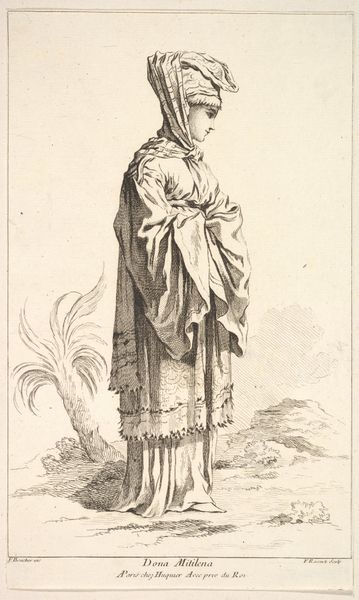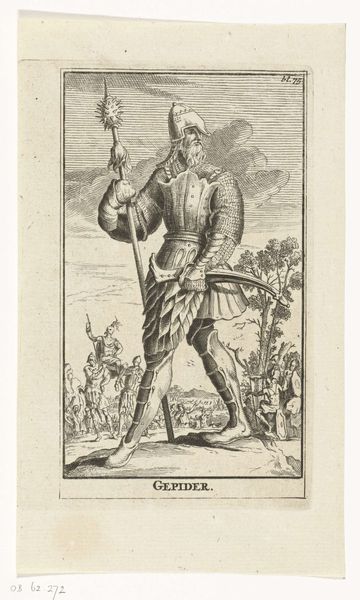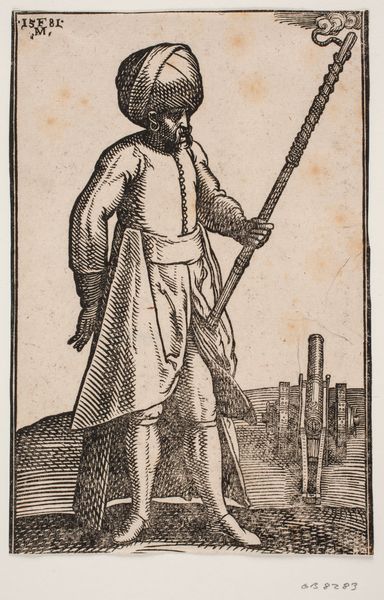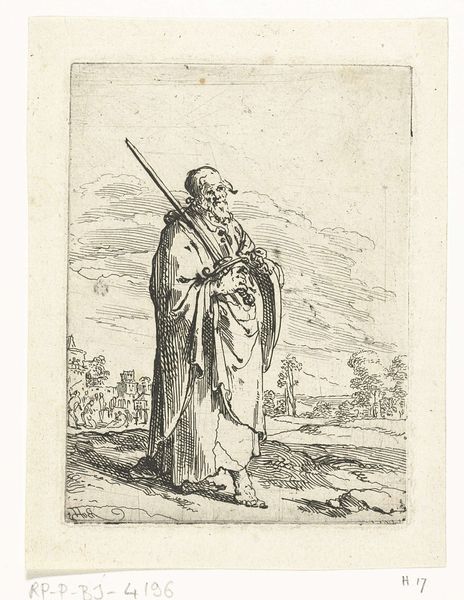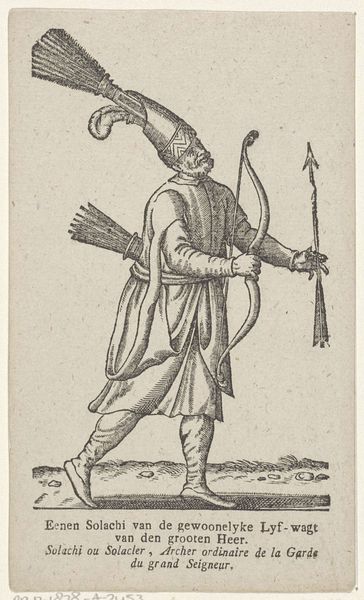
drawing, print, engraving
#
portrait
#
drawing
#
neoclacissism
# print
#
figuration
#
orientalism
#
line
#
portrait drawing
#
history-painting
#
northern-renaissance
#
engraving
#
realism
Dimensions: 228 mm (height) x 170 mm (width) (plademaal)
Curator: J.F. Clemens created this print, "Portræt af Carsten Niebuhr i arabisk klædedragt," sometime between 1773 and 1774. The piece presents Niebuhr in a full-length pose, donning Arabic clothing. What’s your first take on it? Editor: Immediately, I’m struck by the fabric—the textures created through the engraving. It almost looks like watered silk in places. And that weapon tucked into his belt--look how tactile the rendering is! Curator: Indeed, Clemens showcases incredible detail with the tools at his disposal. But consider Niebuhr himself. Here he is, a Western explorer presented in Orientalist garb. We have to ask what's implied about the colonial gaze, the performative aspect of exploration, and how the identities of both the observed and observer are constructed. Editor: Precisely! The making of this image implicates both artist and subject in a much wider exchange of materials and meaning. Notice how the line work mimics textile production - thread upon thread, building form. The very act of printing reinforces ideas of replication, standardization... the control over images, stories, commodities. Curator: Exactly. Think about the power dynamics embedded in such representations. We are asked to look *at* rather than *with*, a position that reinforces the idea of Western superiority through the very act of depiction. It isn't merely a likeness; it's an assertion of a specific worldview. How are we implicated when looking now? Editor: It reminds me how important it is to challenge these historical power imbalances and recognize how the material conditions contribute to making, sustaining and distributing such potent imagery. These aren’t just aesthetic objects, but carriers of ideology. Curator: I agree entirely. Understanding the print as both a document of its time and a commentary on cross-cultural exchange opens up pathways to critically examine legacies of representation that are still relevant today. It shows how visual culture can reveal societal values. Editor: Yes, and reflecting on the tools and process allows us to investigate our present-day tools for reproducing, distributing, and assigning meaning. We still grapple with controlling the narrative through production.
Comments
No comments
Be the first to comment and join the conversation on the ultimate creative platform.
